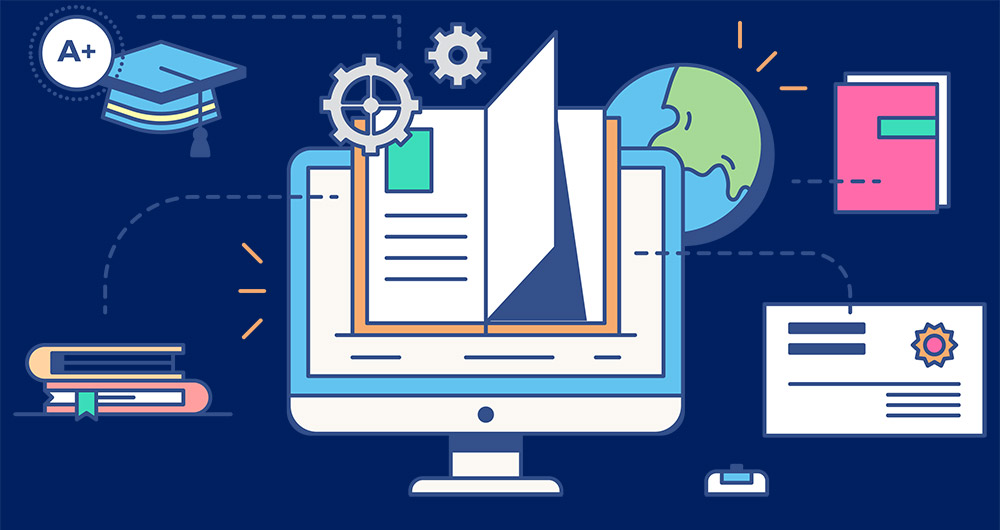Power BI is a business intelligence and data visualization tool developed by Microsoft. It allows users to connect to various data sources, such as databases, spreadsheets, and cloud services, to create interactive and informative reports and dashboards.

Power BI offers a range of features, including data modeling, data transformation, data visualization, and collaboration. It allows users to create complex data models by merging and shaping data from multiple sources, and provides various visualization options to present the data in a way that makes sense to the audience.
With Power BI, users can also create and share reports and dashboards with others, making it easier to collaborate and make data-driven decisions. Power BI integrates with other Microsoft tools, such as Excel and SharePoint, and also offers mobile apps for iOS and Android, allowing users to access and interact with data on the go.
Overall, Power BI is a powerful tool that helps businesses of all sizes to analyze and visualize their data, and make more informed decisions.
Tags
There are several trend analysis techniques and methods that are commonly used in business data analysis. Here are some of the most popular ones:
- Time-series analysis: This involves analyzing data over a period of time to identify trends, patterns, and cycles. Time-series analysis is useful for forecasting future trends based on historical data.
- Moving averages: This technique involves calculating the average of a subset of data points over a specific period of time. Moving averages can be used to smooth out fluctuations in the data and identify trends.
- Seasonal adjustment: This involves adjusting the data to account for seasonal fluctuations in the data. Seasonal adjustment can help identify underlying trends that might be obscured by seasonal variations.

- Regression analysis: This technique involves identifying the relationship between two or more variables. Regression analysis can be used to predict future trends based on historical data.
- Correlation analysis: This involves analyzing the relationship between two or more variables to determine if they are related. Correlation analysis can help identify trends and patterns in the data.
- Forecasting: This involves predicting future trends based on historical data. Forecasting techniques can include time-series analysis, regression analysis, and other statistical techniques.
- Data mining: This involves analyzing large datasets to identify patterns, trends, and relationships. Data mining can help identify trends that might not be apparent using other techniques.
Overall, businesses use these trend analysis techniques and methods to identify trends and patterns in data, make better decisions, and improve their overall performance.
Tags
Classic machine learning (ML) methods and deep learning (DL) are two approaches to solving complex problems in data science. Here are some pros and cons for each:
Classic machine learning:
Pros:
- Faster and more efficient for smaller datasets.
- Simpler and more interpretable models.
- Easier to debug and improve upon.
Cons:
- Not suitable for complex, unstructured data like images and videos.
- Limited to supervised and unsupervised learning.
- May require extensive feature engineering.

Deep learning:
Pros:
- Very effective for unstructured data, like images, videos, and natural language processing.
- Can learn complex features and representations automatically, reducing the need for extensive feature engineering.
- Can scale up to large datasets.
Cons:
- Requires large amounts of high-quality data for training.
- Can be computationally expensive and require specialized hardware like GPUs.
- Can produce black-box models that are difficult to interpret.
In summary, classic ML is better suited for smaller, structured datasets where interpretability and simplicity are important, while DL is more suitable for complex, unstructured data where automatic feature learning is crucial, even at the expense of interpretability and compute resources.
Tags
Analyzing and visualizing large amounts of data for web applications can be accomplished using Python web frameworks such as Flask, Django, and Pyramid. Here are some steps you can follow:
- Collect and preprocess the data: Before you can analyze and visualize the data, you need to collect it and preprocess it to make it suitable for analysis. You can use Python libraries like Pandas, NumPy, and Scikit-learn to manipulate the data.
- Choose a visualization tool: There are many visualization tools available for Python, including Matplotlib, Seaborn, and Plotly. Choose one that best fits your needs and the type of data you are working with.
- Use a web framework to build the application: Choose a web framework like Flask or Django to build the web application. These frameworks make it easy to create web pages, handle requests, and process data.

- Integrate the visualization into the web application: Once you have created the visualization, you can integrate it into the web application. Use a Python library like Bokeh or Plotly Dash to create interactive visualizations that can be embedded in the web pages.
- Optimize the application for performance: Large amounts of data can be slow to load and process, so it’s important to optimize the application for performance. Use caching, pagination, and other techniques to speed up the application.
- Test and deploy the application: Finally, test the application thoroughly and deploy it to a web server. Use tools like Docker, Kubernetes, or AWS Elastic Beanstalk to deploy the application to the cloud.
By following these steps, you can create a web application that can analyze and visualize large amounts of data using Python web frameworks.
Tags
The core principles of programming can be summarized as follows:
- Abstraction: Abstraction is the process of focusing on the essential features of an object or concept while ignoring its irrelevant details. In programming, abstraction helps to manage complexity by hiding implementation details and presenting only the essential features to the user.
- Decomposition: Decomposition is the process of breaking down a complex problem into smaller, more manageable subproblems. In programming, decomposition involves breaking down a large problem into smaller modules, functions or procedures that can be solved independently and then combined to solve the larger problem.
- Modularity: Modularity is the design technique that separates the functionality of a program into independent, interchangeable components called modules. Modularity improves the maintainability, reusability, and scalability of code by allowing developers to modify or replace individual components without affecting the entire system.

- Encapsulation: Encapsulation is the technique of hiding the implementation details of a module or object from other modules or objects. Encapsulation prevents external modules from accessing or modifying the internal state of an object directly and provides a clean and well-defined interface for interacting with the object.
- Maintainability: Maintainability refers to the ease with which a program can be modified or extended without introducing errors. Well-designed programs are easy to maintain because they are modular, encapsulated, and follow established coding conventions.
- Efficiency: Efficiency refers to the ability of a program to perform its intended function quickly and with minimal resource consumption. Efficient programs are optimized for speed and use the minimum amount of memory, processing power, and other system resources.
- Correctness: Correctness refers to the ability of a program to produce the expected output for all valid input. Correct programs are thoroughly tested and verified to ensure that they behave correctly under all possible conditions.
Tags
Python is a powerful programming language that is widely used in scientific computing, data analysis, and machine learning. There are many scientific computing modules and libraries available for Python that make it easy to perform complex data analysis tasks. Here are some steps you can follow to use Python for scientific computing and data analysis:
Install Python: First, you need to install Python on your computer. You can download the latest version of Python from the official Python website (https://www.python.org/downloads/).
Install scientific computing libraries: Next, you need to install the scientific computing libraries for Python. Some of the most popular libraries for scientific computing in Python are NumPy, SciPy, Matplotlib, and Pandas. You can install these libraries using the Python package manager, pip, by running the following commands in the terminal:
Copy code
pip install numpy
pip install scipy
pip install matplotlib
pip install pandas
Load data: Once you have installed the necessary libraries, you can start loading your data into Python. You can load data from a variety of sources, such as CSV files, Excel spreadsheets, SQL databases, and more. Pandas is a great library for working with tabular data in Python.

Clean and preprocess data: Before you can analyze your data, you may need to clean and preprocess it. This could involve removing missing values, scaling the data, or transforming the data in some other way. NumPy and SciPy are powerful libraries for performing numerical operations on arrays of data.
Visualize data: Once you have cleaned and preprocessed your data, you can start visualizing it. Matplotlib is a popular library for creating visualizations in Python, and it can be used to create a wide variety of plots, including scatter plots, line plots, histograms, and more.
Analyze data: Finally, you can start analyzing your data using statistical methods and machine learning algorithms. SciPy has a wide range of statistical functions for performing hypothesis tests, regression analysis, and more. You can also use scikit-learn, a popular machine learning library for Python, to perform more advanced data analysis tasks.
By following these steps, you can use Python in conjunction with scientific computing modules and libraries to analyze data.
Tags
There are many different types of distributions in statistics, but here are some of the most common ones:
Normal distribution: Also known as the Gaussian distribution, the normal distribution is a bell-shaped curve that is symmetrical around the mean. It is used to model many naturally occurring phenomena, such as the height of individuals in a population or the distribution of errors in a measurement.
Binomial distribution: The binomial distribution is used to model the number of successes in a fixed number of independent trials with a fixed probability of success. For example, the number of heads in 10 coin flips.
Poisson distribution: The Poisson distribution is used to model the number of events that occur in a fixed interval of time or space. For example, the number of car accidents per day on a particular road.
Exponential distribution: The exponential distribution is used to model the time between events that occur randomly and independently at a constant rate. For example, the time between arrivals of customers at a store.

Uniform distribution: The uniform distribution is used to model situations where all values within a certain range are equally likely. For example, the roll of a fair die.
Gamma distribution: The gamma distribution is used to model the waiting time until a certain number of events have occurred. For example, the waiting time until a certain number of radioactive decay events have occurred.
Beta distribution: The beta distribution is used to model probabilities between 0 and 1, such as the probability of success in a binary trial.
These are just a few examples of the many types of distributions in statistics, each with their own unique properties and applications.
Tags
There are several statistics that are important for business analysis, including:
Descriptive statistics: Descriptive statistics are used to summarize and describe important features of a data set. They can include measures such as mean, median, mode, range, standard deviation, and variance.
Inferential statistics: Inferential statistics are used to draw conclusions about a population based on a sample of data. They can include hypothesis testing, confidence intervals, and regression analysis.
Time series analysis: Time series analysis is used to analyze data over time, such as sales data or financial data. This can include techniques such as trend analysis, seasonal analysis, and forecasting.

Correlation analysis: Correlation analysis is used to examine the relationship between two variables. This can include measures such as Pearson’s correlation coefficient and Spearman’s rank correlation coefficient.
Statistical modeling: Statistical modeling is used to create models that can help explain and predict business outcomes. This can include techniques such as linear regression, logistic regression, and decision trees.
Overall, the specific statistics that are needed for business analysis will depend on the specific question being asked and the data that is available.
Tags
Machine learning algorithms with Python can be used to solve a wide range of real-world problems across various industries. Here are some examples:
- Healthcare: Machine learning algorithms can be used to analyze medical data to identify patterns and predict disease outcomes. For example, predicting the likelihood of a patient developing a certain disease based on their medical history and lifestyle habits.
- Finance: Financial institutions can use machine learning algorithms to detect fraud, predict stock prices, and identify investment opportunities.
- Marketing: Machine learning algorithms can help companies analyze customer data to personalize marketing campaigns and improve customer engagement.
- Transportation: Machine learning algorithms can be used to optimize traffic flow and reduce congestion, as well as to develop self-driving cars.
- Manufacturing: Machine learning algorithms can be used to optimize manufacturing processes, detect defects in products, and predict maintenance needs.

To use machine learning algorithms with Python, you typically follow these steps:
- Collect and preprocess data: Collect relevant data and preprocess it to make it suitable for analysis.
- Train a machine learning model: Choose an appropriate machine learning algorithm and train the model on the preprocessed data.
- Evaluate the model: Test the accuracy of the model by using a separate set of data, and make adjustments as necessary.
- Deploy the model: Once the model has been evaluated, deploy it to a production environment where it can be used to solve real-world problems.






